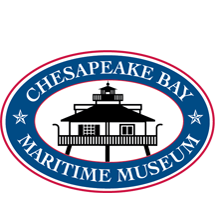 Visitor and operational spending at the Chesapeake Bay Maritime Museum reached almost $12.6 million in 2019, resulting in nearly $10.3 million in total economic impact for the county’s economy, according to a recently completed statewide impact study.
Visitor and operational spending at the Chesapeake Bay Maritime Museum reached almost $12.6 million in 2019, resulting in nearly $10.3 million in total economic impact for the county’s economy, according to a recently completed statewide impact study.
“CBMM is a proven driver of our local economy,” said CBMM President Kristen Greenaway. “As a rising tide lifts all boats, we hope that our efforts can bring successes not just to CBMM, but to our entire community, both locally and statewide.”
Impact Study
A recently completed statewide impact study shows just how much of an economic contributor CBMM is to the Town of St. Michaels, Talbot County, and the state of Maryland. In 2019, visitors traveling specifically to visit CBMM from more than 50 miles generated $11.6 million in visitor spending for Talbot County – $11 million of which was spent in St. Michaels on local travel-related goods and services. The study also details that spending by out-of-state visitors who specifically traveled to St. Michaels to visit CBMM generated $6.5 million in net economic impact for Maryland.
“Local restaurants, shops, hotels, and marinas are at the backbone to our economy,” Greenaway said. “When our local businesses thrive, we all thrive, and the results from the in-depth study is proof that CBMM will play a key role in the Eastern Shore’s economic recovery due to COVID-19.”
Globally, the travel industry has been one of the hardest hit by the pandemic. This is especially true for the Eastern Shore and St. Michaels. Greenaway knows it will take some time to bounce back, as CBMM works with the business community on providing visitors some reassurance.
“We’ve all gone to great lengths to reopen during this crisis,” said Greenaway. “We need everyone, including our visitors and community leaders, to help us move the local economy in the right direction.”
Findings
Rockport Analytics, an independent research firm based in Annapolis, Md., conducted the study, analyzing CBMM’s 2019 data with statewide numbers. The conservative report measured the benefits of CBMM’s (1) ongoing operations, (2) visitors and local spending, (3) future construction and operational impacts that will result from CBMM’s campus expansion, and (4) the educational and community impact that CBMM provides to St. Michaels, Talbot County, and Maryland.
According to the American Alliance of Museums (AAM), museums and cultural institutions in the United States have experienced serious financial losses during the pandemic, and research suggests some may never recover. Although CBMM has experienced a loss of revenue streams due to COVID-19, the data demonstrates the economic importance museums have on surrounding communities nationwide.
“When visitors come specifically to visit CBMM, they generate travel-related ancillary spending,” said Jon Gray, Principal, Rockport Analytics. “Arriving by car or even boat, virtually all their local spending in St. Michaels and Talbot County can be attributed to CBMM.”
Other key findings:
- CBMM-initiated visitor spending and expenses for operations in Talbot County reached almost $12.6 million, resulting in nearly $10.3 million in total economic impact for the county’s economy.
- CBMM visitor, business operations, and capital spending generated more than $1 million in total tax revenue for Maryland.
- For every $1 spent in Talbot County by CBMM’s business operations and visitors, the county’s economy retained about 82 cents. Around 14 cents of this total spending was retained as local tax revenue.
- The state and local taxes collected from CBMM-supported spending were enough to educate 130 Talbot County public school students for one school year.
- Without CBMM, Talbot County’s 37,181 households would each have to pay $46 more in state and local taxes to maintain current levels of tax receipts.
- Forty-four cents of every dollar spent by CBMM visitors goes toward the wages of St Michaels’s workers in the town’s restaurant, lodging, and retail establishments.
- CBMM visitor and business operations spending supported more than 250 direct jobs in Talbot County.
- CBMM’s Phase 1 building expansion will bring $4.2 million value-added for Talbot County and is projected to contribute $3 million in Talbot County wages.
Economic Benefits
Rockport Analytics used the IMPLAN modeling system to translate CBMM related spending into local economic benefits. The IMPLAN model (or “impact analysis for planning”) is a non-proprietary database and modeling system that is considered industry standard and has been used by government agencies, academia, and leading researchers for more than 40 years to carry out economic impact studies. Learn more about CBMM’s impact here.
Last year, CBMM welcomed more than 84,000 guests. Through volunteer programs, internships, and apprenticeships, CBMM also builds human capital, serving as a valuable resource for the development of basic and specialized job skills. CBMM is now engaged in certified workforce training with the Shipyard’s four-year apprenticeship program, which is registered by both the U.S. and Maryland departments of labor. The $5 million Maryland Dove contract awarded to CBMM in 2019 generated 10 jobs and a new attraction for visitors. The Chesapeake Bay Maritime Museum officially reopened to the public at the end of June, with everyone on campus required to follow the Town of St. Michaels ordinance and wear facial coverings inside buildings at all times and outdoors when within six feet of other guests. Additional information on CBMM’s enhanced health and comfort measures and operational changes for reopening can be found at welcome.cbmm.org.